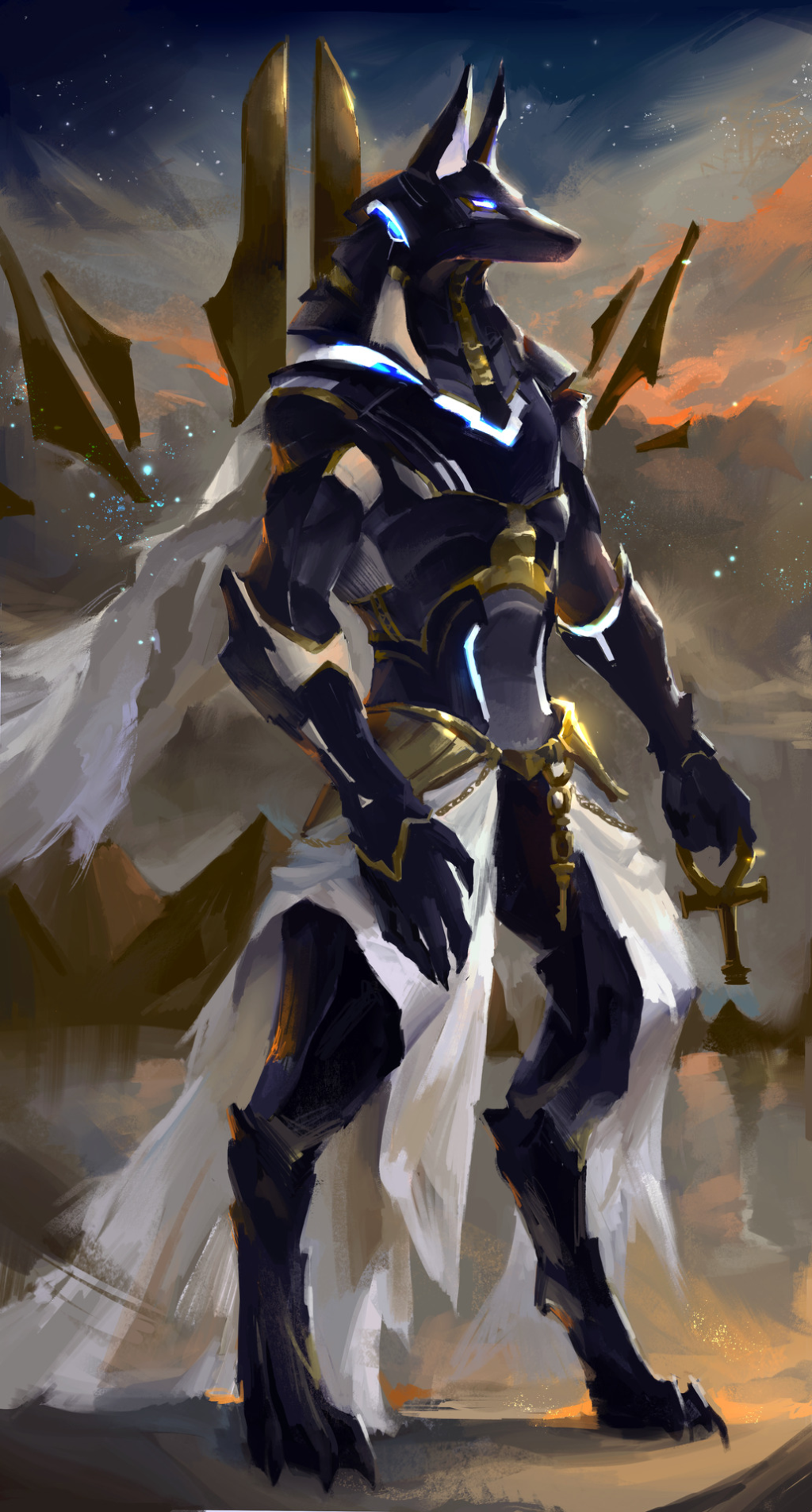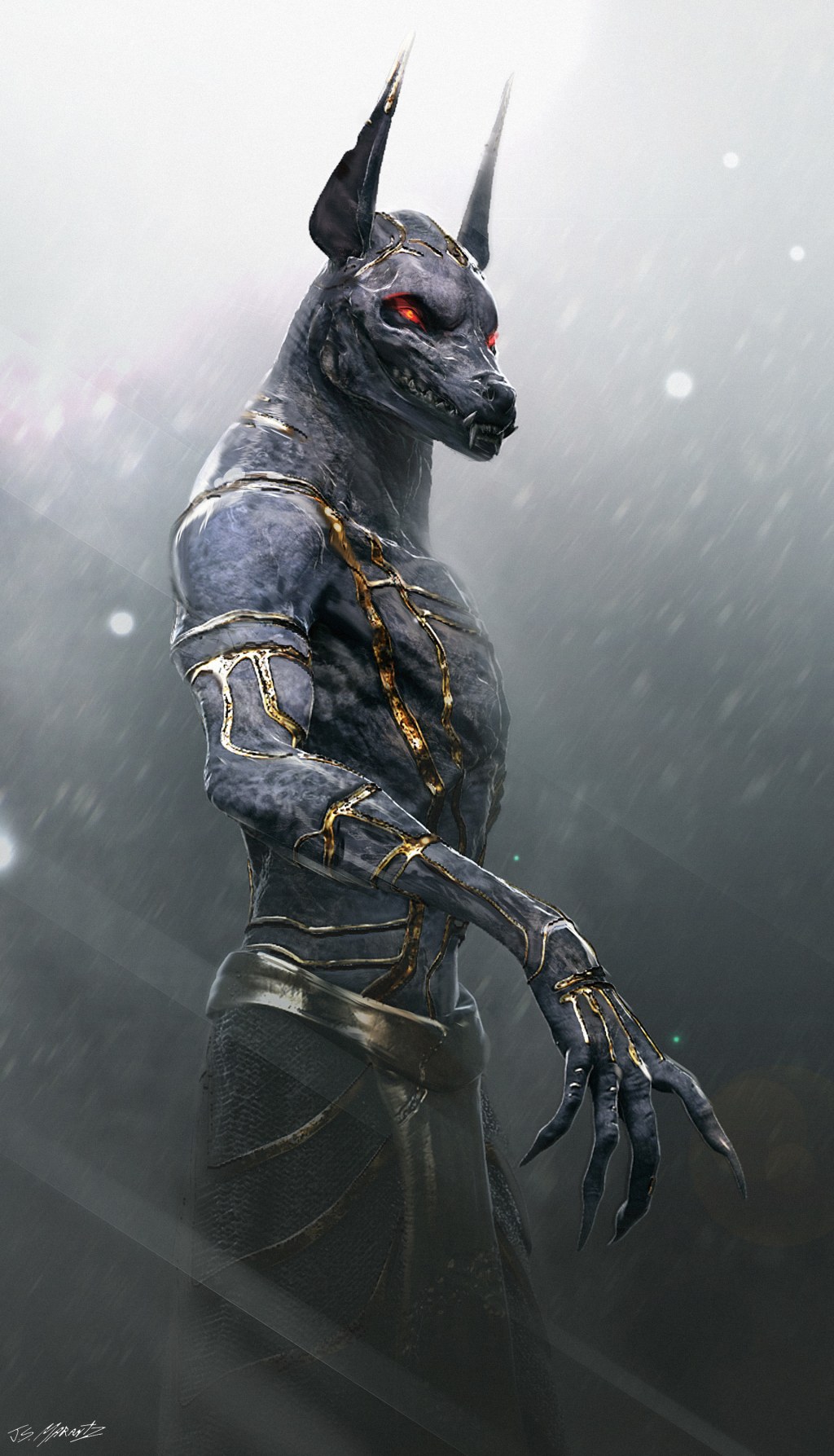Anubis Concept Art: Exploring the Divine Inspiration Behind the Ancient Egyptian God
Introduction
Greetings, Art Lovers! In this article, we will dive into the captivating world of Anubis concept art, shedding light on the fascinating inspiration behind the ancient Egyptian god. Anubis, often portrayed as a jackal-headed deity, holds great significance in Egyptian mythology. Let’s embark on a journey to discover the artistry and symbolism of this iconic figure.
What is Anubis Concept Art?
Anubis concept art refers to the creative representation and visualization of the god Anubis in various forms of artistic expression. Artists explore different interpretations, styles, and mediums to bring this ancient deity to life. From traditional paintings and sculptures to modern digital art and illustrations, Anubis concept art showcases the versatility and imagination of artists.
Who is Anubis?

Image Source: pinimg.com
Anubis, known as the god of embalming and the afterlife, played a crucial role in ancient Egyptian mythology. With a jackal-headed appearance, he oversaw the weighing of the deceased souls’ hearts against the feather of Ma’at, determining their fate in the afterlife. Anubis was also associated with mummification, protection, and the guardian of tombs.
When Did Anubis Concept Art Originate?
Anubis concept art has its roots in ancient Egyptian civilization, dating back over four thousand years. The depictions of Anubis began during the Early Dynastic Period (c. 3100–2686 BC) and continued throughout the Pharaonic era. Today, artists continue to draw inspiration from the rich history and mythology surrounding Anubis.
Where Can You Find Anubis Concept Art?

Image Source: tumblr.com
Anubis concept art can be found in various art forms and mediums, both in physical galleries and online platforms. Museums, such as the Egyptian Museum in Cairo and the Louvre in Paris, exhibit ancient artifacts and artworks featuring Anubis. Additionally, online art communities and platforms showcase contemporary Anubis concept art created by talented artists worldwide.
Why Anubis Concept Art Is Significant
Anubis concept art holds great significance for art enthusiasts and admirers of ancient Egyptian culture. Through the creative interpretations of artists, Anubis concept art allows us to connect with the spiritual and mythological beliefs of ancient Egyptians. It serves as a visual representation of their reverence for the afterlife, rituals, and deities.
How to Create Anubis Concept Art

Image Source: artstation.com
Creating Anubis concept art requires a deep understanding of Egyptian mythology, symbolism, and artistic techniques. Artists can start by researching and studying ancient Egyptian art, architecture, and iconography to gain inspiration and insights. Experimenting with different styles, mediums, and visual storytelling techniques can bring Anubis to life in unique and captivating ways.
Pros and Cons of Anubis Concept Art
Pros:
Preservation of Ancient Egyptian Culture: Anubis concept art helps preserve the rich cultural heritage of ancient Egypt by keeping its mythology alive.
Creative Exploration: Artists have the freedom to explore and reinterpret Anubis, allowing for innovative and diverse representations.
Spiritual Connection: Anubis concept art enables viewers to establish a spiritual connection with the ancient Egyptian beliefs and customs.
Cultural Exchange: Anubis concept art fosters cultural exchange and dialogue by introducing the mythology to a global audience.
Artistic Inspiration: Anubis concept art serves as a source of inspiration for artists, encouraging them to delve into ancient mythology and expand their creative horizons.
Cons:
Misinterpretation: The diverse interpretations of Anubis concept art may lead to misunderstandings or misrepresentations of the original mythology.
Commercialization: The mass production and commodification of Anubis concept art can dilute its cultural and artistic significance.
Inaccuracies: Some Anubis concept art may deviate from historical accuracy, altering the traditional iconography and symbolism associated with the deity.
Appropriation: Anubis concept art created by artists from different cultures must be mindful of respecting and acknowledging the origins and cultural context.
Overexposure: The popularity of Anubis concept art may lead to oversaturation, resulting in a lack of originality and artistic exploration.
Frequently Asked Questions about Anubis Concept Art
1. Why is Anubis often depicted with a jackal head?
According to Egyptian mythology, Anubis is associated with jackals, which were often seen near cemeteries. The jackal-headed depiction represents his role as a guardian of the dead and mummification.
2. Are there any other gods or goddesses associated with Anubis?
Anubis is often associated with Osiris, the god of the afterlife, and Bastet, the goddess of home, fertility, and protection. These deities play interconnected roles in Egyptian mythology.
3. What materials were used to create ancient Anubis statues and artworks?
Ancient artisans primarily used materials such as limestone, wood, bronze, and gold to create Anubis statues and artworks. These materials were chosen for their durability and symbolic significance.
4. How has Anubis concept art influenced popular culture?
Anubis concept art has made its way into popular culture through various mediums, including movies, video games, and literature. These depictions often draw inspiration from ancient Egyptian mythology while adding their own creative interpretations.
5. Can I create my own Anubis concept art?
Absolutely! Anubis concept art welcomes artists of all skill levels to explore their creativity and create their interpretations of this iconic deity. Remember to research and respect the cultural and mythological significance associated with Anubis.
Conclusion
Through the captivating world of Anubis concept art, we have gained a deeper understanding of the symbolism, history, and artistic interpretations of this ancient Egyptian god. From ancient artifacts to modern digital illustrations, Anubis concept art continues to inspire and fascinate art enthusiasts worldwide. Let your creativity soar as you explore the divine realm of Anubis and unleash your artistic potential!
Final Remarks
In conclusion, the realm of Anubis concept art offers a mesmerizing glimpse into the ancient Egyptian civilization and its rich mythology. However, it is crucial to approach this art form with respect, sensitivity, and a deep appreciation for the cultural heritage it represents. By honoring the origins and symbolism associated with Anubis, we can continue to celebrate and preserve the legacy of this extraordinary deity for generations to come.